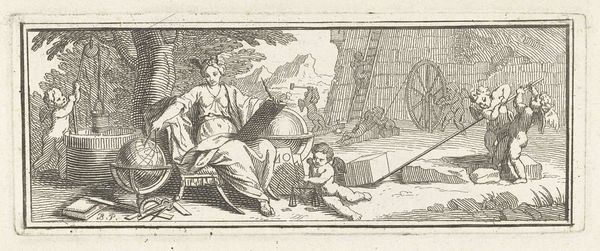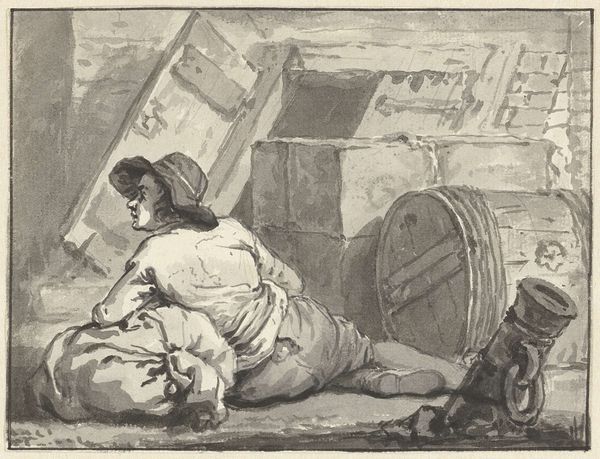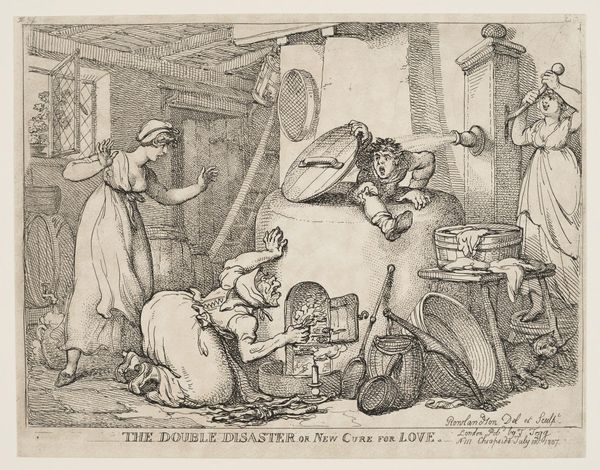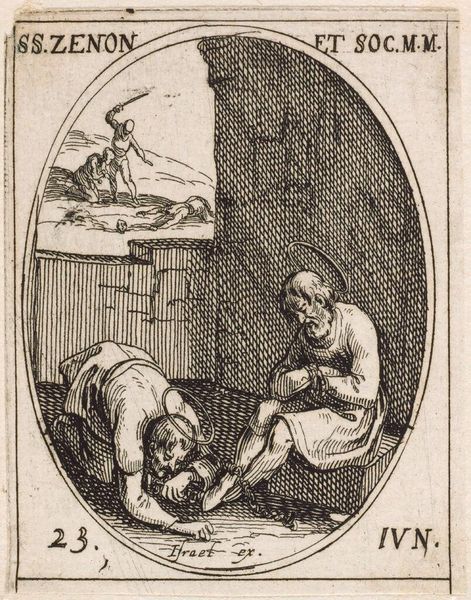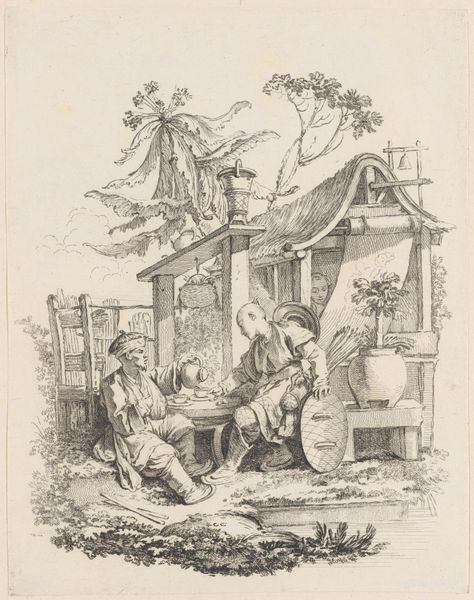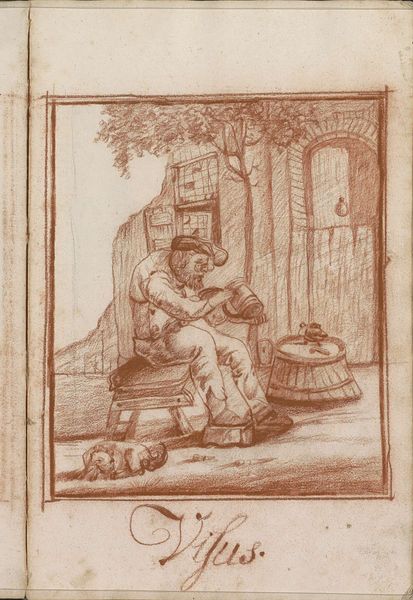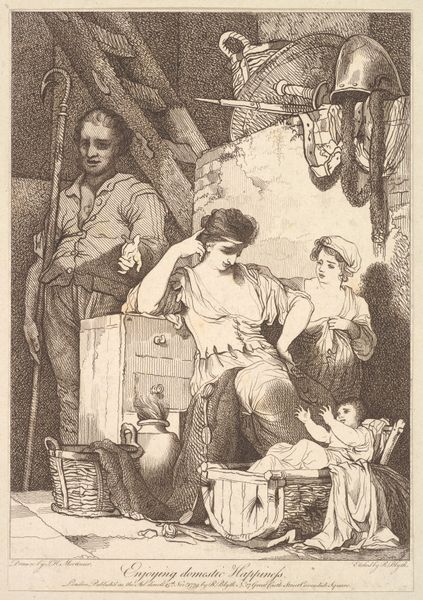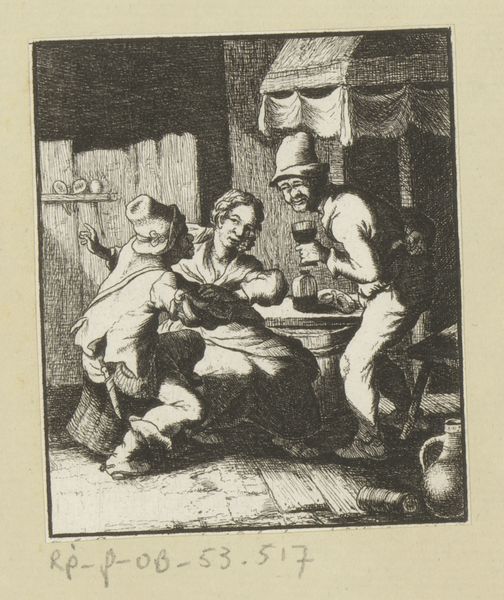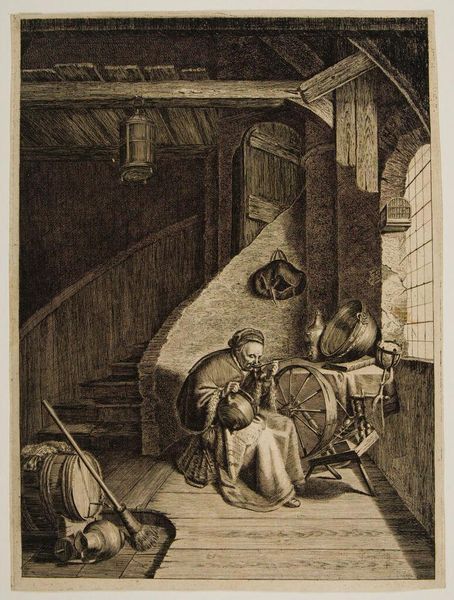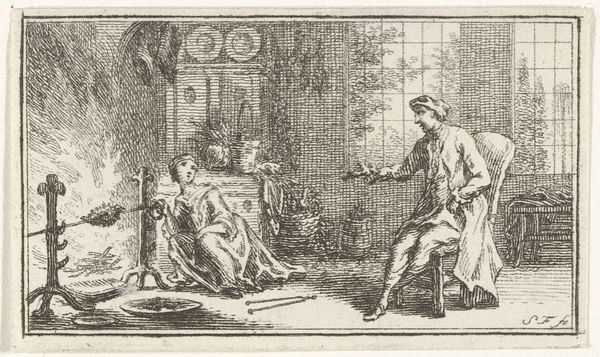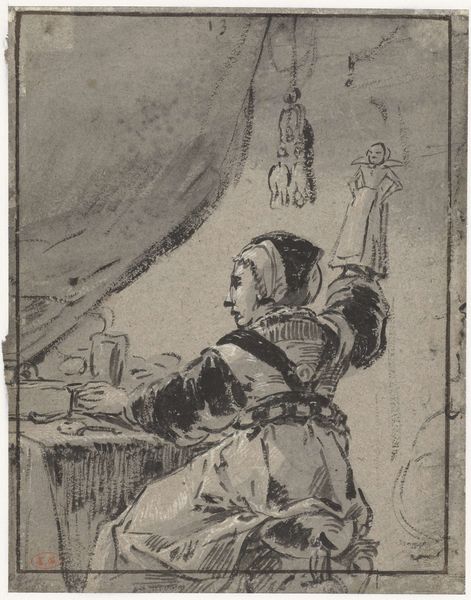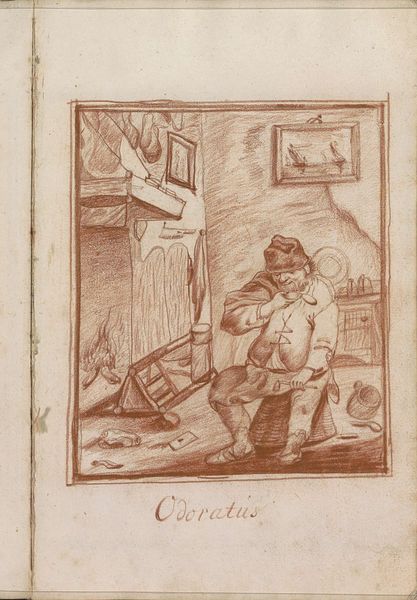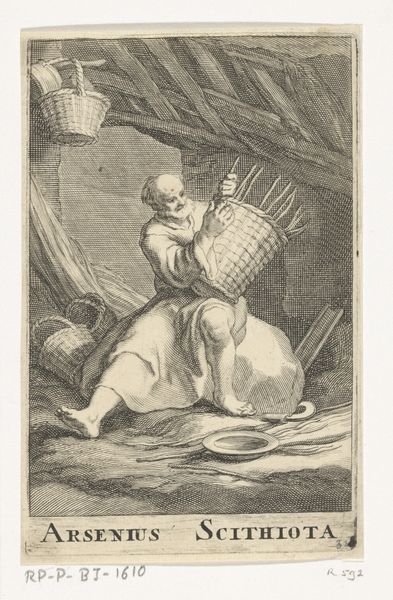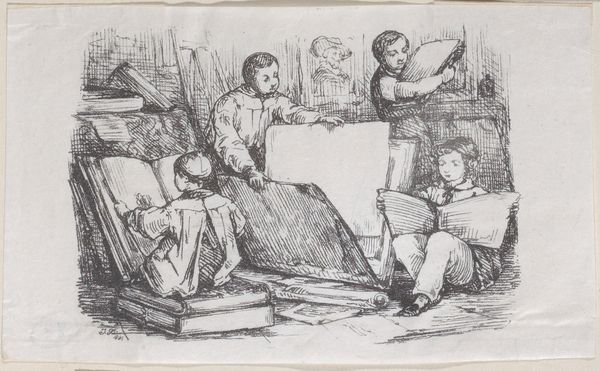
drawing, paper, ink
#
drawing
#
allegory
#
baroque
#
figuration
#
paper
#
ink
#
history-painting
Dimensions: height 48 mm, width 120 mm
Copyright: Rijks Museum: Open Domain
Editor: This is "Allegory of the Sciences," a drawing in ink on paper by Bernard Picart, created sometime between 1683 and 1733. It feels like quite an elaborate statement; a goddess figure surrounded by putti engaged in various activities… What does it tell us about the role of the sciences at the time? Curator: It's a fascinating piece reflecting the period’s shifting views on knowledge. The goddess represents Science, enthroned and serene, amidst the symbols of human progress. But look closer – the putti aren't just playful, they are actively engaged in engineering, lifting, and measuring, suggesting a very *active* pursuit of knowledge. Editor: I see what you mean! They're like tiny scientists, literally embodying the spirit of inquiry. So, this isn't just a symbolic representation, it's about the *practice* of science? Curator: Precisely. It highlights the increasing emphasis on empirical observation and experimentation. Consider the date – this drawing emerges during the rise of scientific societies and the Enlightenment. It represents the institutionalisation of science itself, from philosophical enquiry to something investigated more communally. Does the scene evoke for you a kind of controlled chaos? Editor: Definitely! There's so much activity happening all at once. It’s busy, but orderly. The putti using levers and pulleys – it’s like a demonstration of applied science! What does this kind of visual encoding mean for its public role at the time? Curator: It’s aimed at cultivating public engagement with the "new sciences". Science becomes allegorised, but more importantly, actively demonstrated for a wide audience, including future patrons, members, or collaborators, reflecting how deeply it's becoming integrated into broader society. Editor: I hadn't considered the active, participatory element. Now I see it more as a visual argument for science’s importance in society, which can be seen as propaganda for this intellectual movement. Curator: Exactly. It underscores how the representation of knowledge itself can be a political act. Editor: Thanks, this helped to give context to an artwork, turning it from a scene into a statement. Curator: Agreed. These layers of history and visuality bring us to a richer appreciation of not just art but culture at large.
Comments
No comments
Be the first to comment and join the conversation on the ultimate creative platform.
